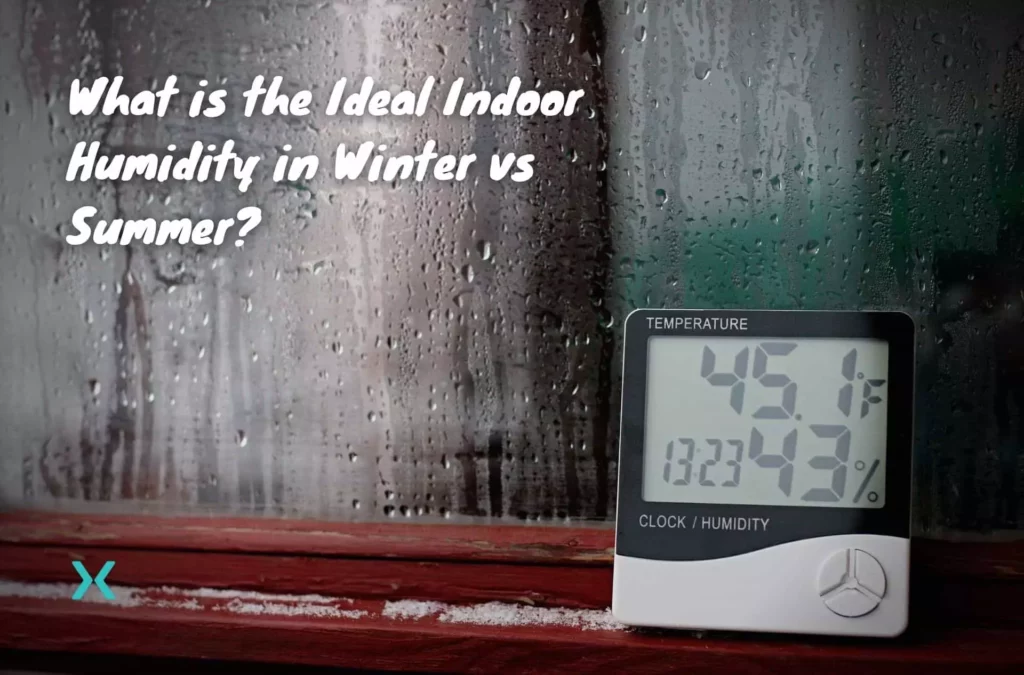What is the Ideal Indoor Humidity in Winter vs Summer?
In summer, do you ever feel that your house is unbearably stuffy?
Does sitting in your living room feels like being in a cave on a 100°F day? Or do you end up with dry skin and itchy eyes in winter? These feelings are all caused by humidity.
Put simply, humidity is the amount of moisture or water vapor (what water is called when it’s in a gaseous state) in the air.
When the relative humidity is higher, there is more water vapor present in the air, and when it’s lower, there is less.
✅ Ideally, you want to maintain an indoor humidity level of 30-50% at all times. However, this can change depending on the season.
This article will help explain the difference in relative humidity in winter vs. summer and what you can do to get an ideal indoor humidity level.
Table of Contents
💧 What is Relative Humidity?
When scientists and meteorologists talk about humidity, they usually like to describe it in terms of “relative humidity.” But what does that actually mean?
It turns out it’s not actually that complicated. When measuring humidity, scientists look at how much water vapor is in the air compared to the amount of non-wet dry air.
✅ This is known as absolute humidity.
The relative humidity is just how much of this absolute humidity is in the sky compared to the maximum possible amount of humidity.
So if the absolute humidity levels in the air were 30% of the highest possible humidity, the relative humidity levels would be 30%.
Current Relative Humidity Map for the US: weathercentral.com/weather/us/maps/humidity
We didn’t forget about you, Canada!: ca.weathercentral.com/weather/ca/maps/humidity
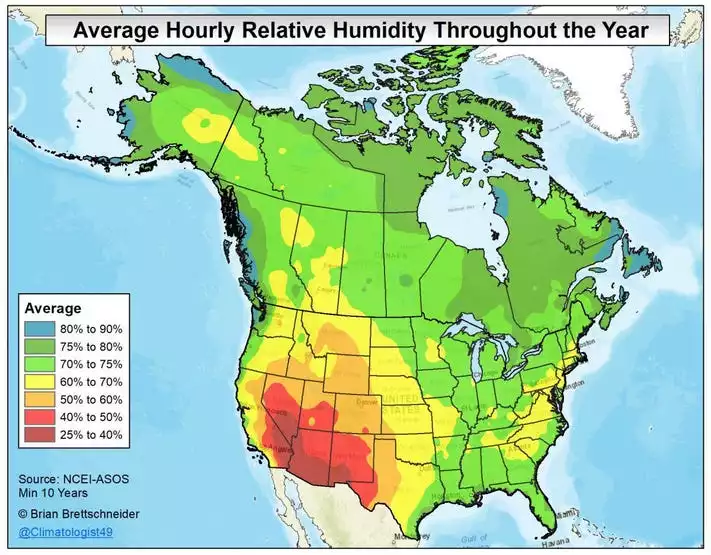
☀️❄️ Is There a Difference in Humidity in Winter vs. Summer?
There is a big difference in humidity between the two seasons.
This is because the temperature changes the amount of moisture the air can hold.
When the weather is warmer, the air holds more moisture; logically, it can hold less moisture when it’s colder.
So that means there’s a higher relative humidity in summer and lower relative humidity in colder weather.
You can think of it like cars. In the summer months, the air is like a roomy SUV in which you could fit your entire family, your camping supplies, and probably even your neighbor’s family if you felt like it.
However, in winter, the air is more like a two-door European coupe, where you might be lucky to squeeze in your groceries if you’re traveling with another person.
Related Reading: Best AC Temperature for Summer?
💧 What are Some of the Effects of Low Humidity in Winter?
Low humidity can have some serious adverse effects on your health.
This is due to the low amount of moisture in the cold air, which can lead to:
- dry and itchy skin
- sore throats and nasal congestion
- itchy eyes

💧 What are Some of the Effects of High Humidity in Summer?
High humidity can affect not only your health but also your house.
This is due to the extra moisture in the air, which exceeds the ideal level for humans and home maintenance.
💧 What are Some of the Effects of High Humidity Levels on Humans?
Scientists have found that excess perspiration in warm air can cause health issues like:
- feeling tired and having little energy
- over-heating and heat exhaustion
- dehydration, and even fainting
💧 What are Some of the Effects of High Humidity Levels on Houses?
Excess indoor humidity levels can also strongly impact the health of your house.
When indoor air is exposed to unwanted moisture, this can lead to condensation on your house’s walls and floors.
This can lead to mold growth and other potentially harmful bacteria, dramatically reducing indoor air quality.
Over time, this mold can cause severe long-term structural damage, potentially costing you thousands in repairs.
It can also be a threat to your health, as it can also trigger allergies and respiratory infections.

💧 What is the Ideal Indoor Humidity Level in Winter?
To avoid the harmful effects of low humidity levels in winter, you must maintain your home humidity level at the “comfort level” of 30-50%.
However, due to problems posed by cold air, it may be better to aim for between 30-40%.
This is because of condensation. In colder months, even though the inside of your home may be warm if you have heating and air conditioning, the outside temperature stays cold.
So if your home humidity is too high, moisture can collect on your cold windows or on cold metal, which can cause mold growth and other health issues.
So if you live in an already cold climate, make sure you maintain your humidity at an appropriate amount and try not to add moisture beyond 40%.
💧 What is the Ideal Indoor Humidity Level in Summer?
In summer, you must maintain humidity levels in the “comfort level” of 30-50%.
Though you don’t need to be as specific with the humidity as in the winter months, you must maintain these levels.
⭐ Achieving that Ideal Indoor Humidity in All Seasons.
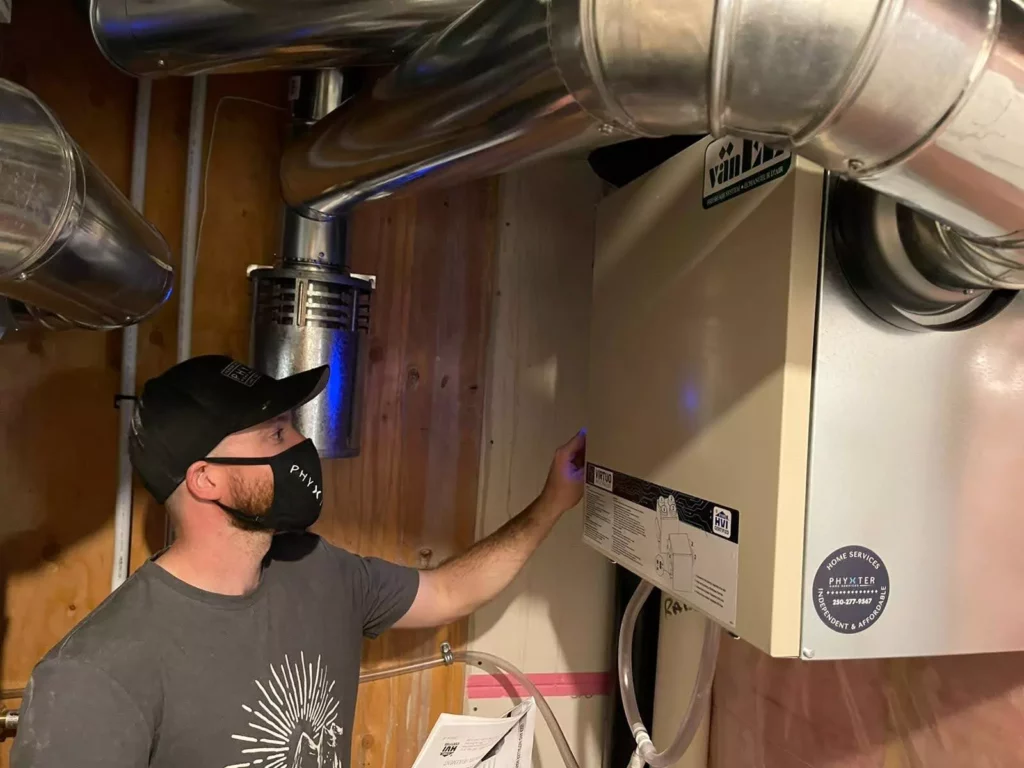
💧 Strategies For That Ideal Indoor Winter Humidity
To combat falling humidity in cooling temperatures, you can try several strategies.
One good strategy is to add moisture to the air by using warm water.
That’s right, you can fight against poor humidity just by boiling water!
This is because the steam produced by evaporating water puts moisture into the air, making up for the low levels of winter.
As if you needed another excuse to take a hot bath when it’s cold out!
You can also try buying warm or cool mist humidifiers to add moisture.
But which one should you choose?
💧 Warm Mist Humidifiers vs. Cool Mist Humidifiers
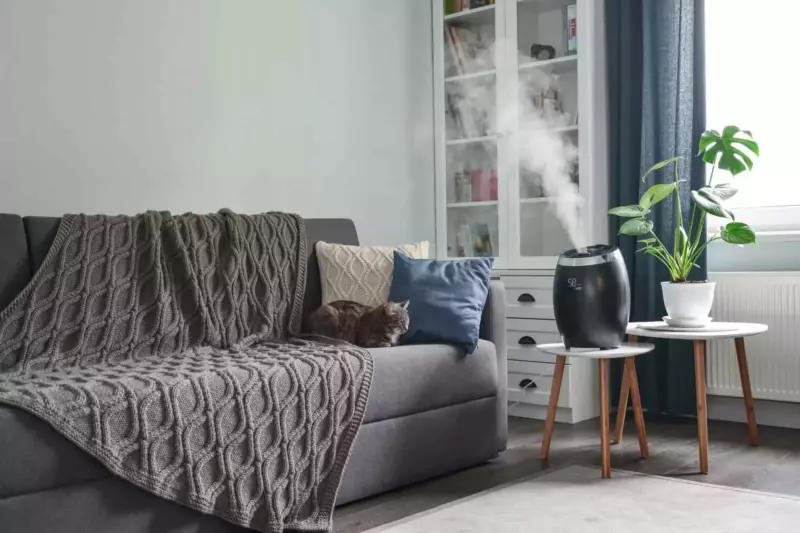
Both warm mist and cool mist humidifiers work in the same way: they are steam vaporizers that help raise humidity levels by adding moisture to the air.
The only difference between them is heat.
As their names suggest, warm mist humidifiers will emit heat, making your house more snug and humid in winter.
The cool mist will have a likewise effect, cooling temperatures.
People living in households with children or pets may be advised to purchase cool mist humidifiers, as getting too close to them could burn you.
But they shouldn’t present a problem if placed in a safe place.
💧 How can you Achieve an Ideal Indoor Humidity Level During Summer?
A good strategy for reducing humidity in summer is ensuring your home is well ventilated.
Open windows, turning on fans, and minimizing steam can prevent condensation, cool your house, and keep it safe from mold and health problems.
Just as you can buy humidifiers, you can also look into dehumidifiers.
These operate similarly to humidifiers but instead take in excess moisture.
💧 Is There Anything That Can Manage Humidity Control in Both Seasons?
Though the effects of the warm air of summer and the dry air of winter are different, they can both be tackled with an HVAC system.
An HVAC system (which comprises heating, air conditioning, and ventilation) can control humidity levels, adding or taking as much moisture from the air through a simple-to-use humidity setting.
They operate as whole-home humidifiers, allowing you to control the entire home compared to a singular portable room humidifier you buy at a store.
Additionally, the air conditioner function of HVAC systems can also affect humidity.
Changing the temperature can help you feel cool and give you ideal humidity, as having a lower temperature in your home reduces moisture.
Adding an Energy Recovery Ventilation (ERV) system can help manage your indoor humidity.
💧 What is an Energy Recovery Ventilation (ERV) system?
To understand what an Energy Recovery Ventilation system is, first, you need to know what a Heat Recovery Ventilation (HRV) system is.
An HRV system uses heat from your stale exhaust air to help preheat incoming fresh air. This reduces the amount of energy required to get the outside air up to the ambient air temperature in your home.
An ERV takes this one step further by also capturing the humidity in the home and keeping it on the same side of the thermal envelope it was found. In this case, the thermal envelope is the interior of your home.
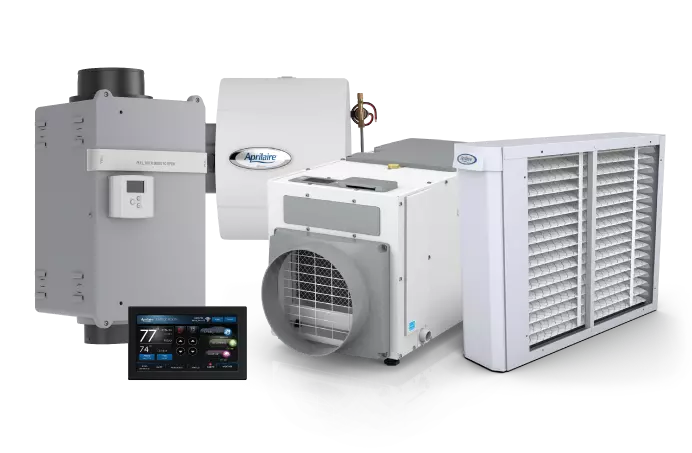
⭐ Summary

So now you know what the ideal indoor relative humidity level is for your home.
Of course, where you live will dictate whether you need to add humidity or remove it. Yes, we are looking at you, Florida!
If you still have questions about managing humidity levels in your home, consult with your local HVAC technician to ensure your whole home HVAC systems are set up to keep your home environment comfortable and healthy.
If you live in the North or Central Okanagan region, give Phyxter Home Services a call to schedule a consultation to discuss options for humidity control.
You will be surprised how a small humidity change affects your home’s livability!

